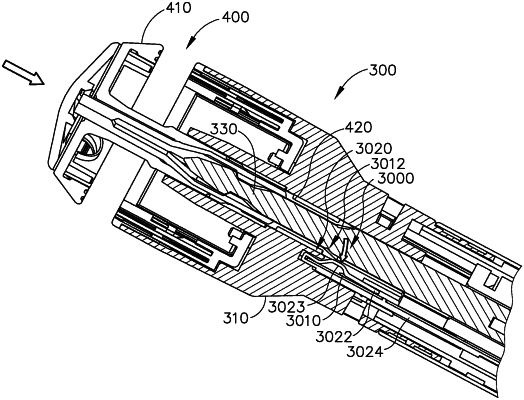| CPC A61B 17/068 (2013.01) [A61B 17/1155 (2013.01); A61B 2017/07257 (2013.01); A61B 2017/2946 (2013.01); A61B 2090/0811 (2016.02)] | 20 Claims |

|
1. An apparatus comprising:
(a) an end effector, wherein the end effector includes:
(i) a first stapling member having a plurality of staple openings that house a plurality of staples,
(ii) a second stapling member having a plurality of staple forming pockets configured to form the staples, wherein the first and second stapling members are configured to cooperate to clamp and staple tissue, and
(iii) a closure member configured to couple the first stapling member with the second stapling member, wherein the closure member is actuatable to transition the end effector from an open state for receiving tissue to a closed state for clamping tissue;
(b) a motor operatively coupled with the end effector; and
(c) a motor lockout assembly operatively coupled with the motor, wherein the motor lockout assembly includes:
(i) an electrical switch operable to selectively inhibit and permit activation of the motor, and
(ii) an actuator member separate from the electrical switch and configured to actuate the electrical switch, wherein at least a portion of the actuator member is configured to be positioned externally of the closure member,
wherein in response to closure of the end effector by the closure member, the actuator member is movable relative to the second stapling member to interact with the electrical switch such that the electrical switch permits activation of the motor.
|